5 Tips to A Better Night’s Sleep
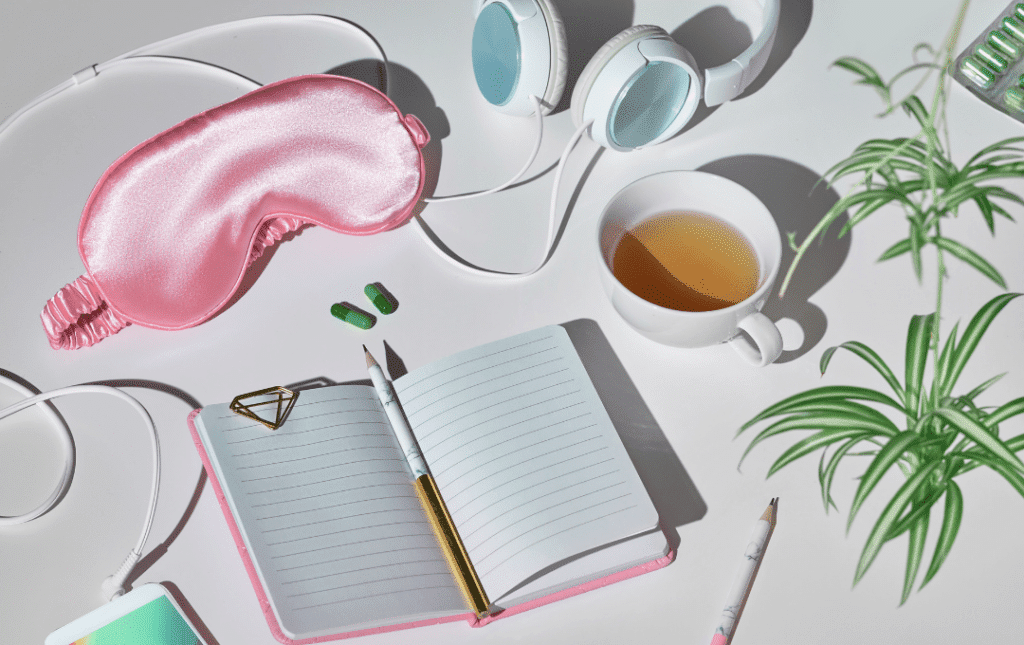
Introduction
Most of us know that ideal sleep environments are dark, quiet, and cool. But if you’re trying to improve your sleep to reduce fatigue and daytime sleepiness, it’s not enough to just get the basics right — you need to think about light.
Light is the most important external factor affecting sleep. While most people intuitively know that it’s easier to sleep when it’s dark, the link between light and sleep goes much deeper.
Getting a good night’s sleep is one of the best things you can do for your health, and a lack of sleep can lead to all sorts of health problems, such as depression, poor memory and cognitive functioning, weight gain, diabetes, and more. If your sleep schedule is all messed up, you might be waking up too late or in the middle of the night. This article will help improve the quality of your sleep by showing you how to protect your eyes from light and how to get the most out of natural light.
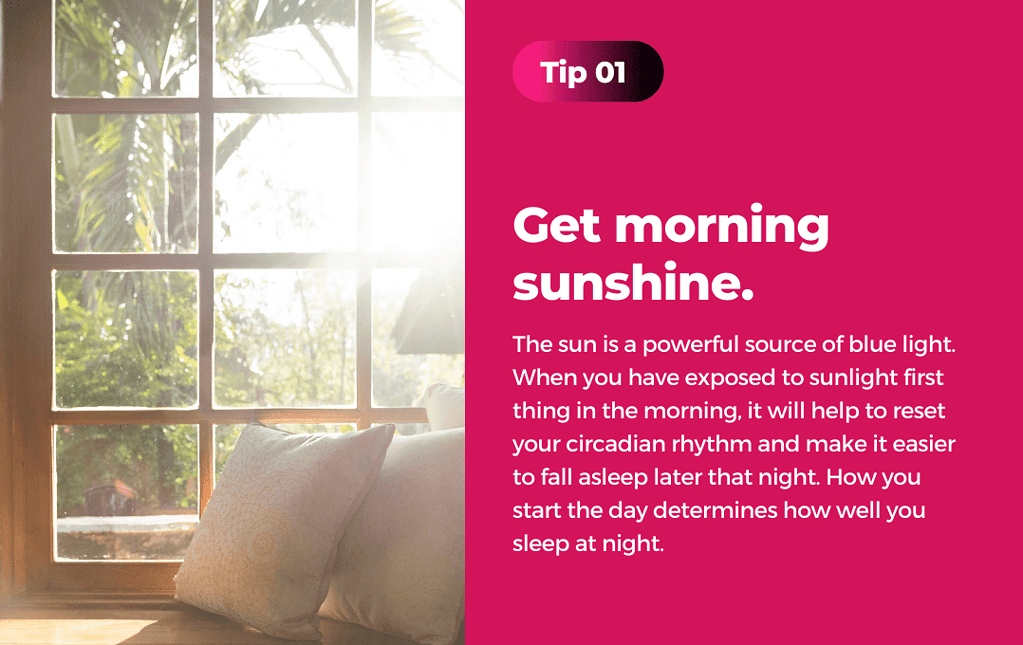
Tip 1. Get morning sunshine upon waking.
The sun is a powerful source of blue light. When you are exposed to sunlight first thing in the morning, it will help to reset your circadian rhythm and make it easier to fall asleep later that night. This isn’t a problem if you get up early and have time to get some sunlight, but it can be difficult for anyone who works the night shift or is an extreme night owl. Your body needs natural sunlight to regulate how tired you feel and stay on an internal sleep schedule.
Getting morning sunlight also helps with circadian rhythm. Circadian rhythm is your body’s natural timing that tells you when to go to sleep and when it’s time to wake up. When your circadian rhythm is out of whack, it can cause a whole host of problems including poor sleep quality, not being able to fall asleep, waking up tired even after a full night’s sleep and even weight gain. Fixing this is easy with morning sunlight but difficult without it.
If you can’t get outside in the morning, consider using a light therapy lamp to mimic the effects of sunlight or a red light therapy device. These devices emit bright light that mimics natural light, making it easier for your body to get into a healthy circadian rhythm after a night of tossing and turning.
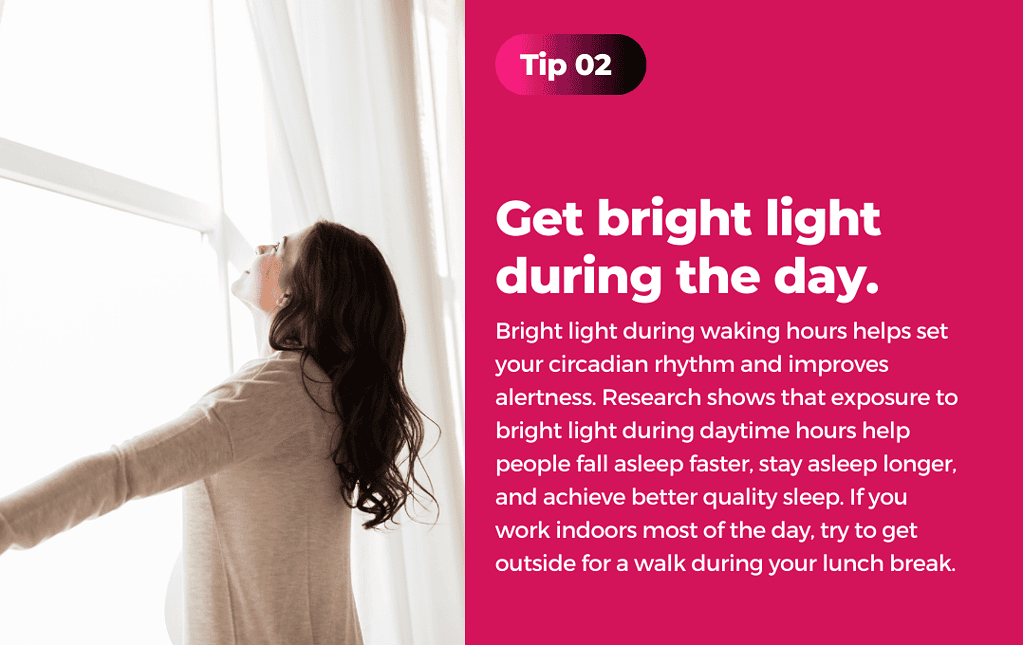
Tip 2. Get bright light during the day.
Bright light during waking hours helps set your circadian rhythm and improves alertness. Research shows that exposure to bright light during daytime hours help people fall asleep faster, stay asleep longer, and achieve better quality sleep. The more light you get during the day, the better your sleep will be at night. If you work indoors all day, make sure to get outside in the daylight as much as possible. If that’s not possible, consider using a red light therapy device for your office or home to help regulate your circadian rhythm and improve your sleep quality by mimicking natural light from the sun.
Tip 3. Avoid blue light at night.
The blue light from screens on cell phones, tablets, and televisions can delay the release of sleep-inducing melatonin. It can also increase alertness which will make it hard for you to fall asleep. Turn off your screens at least an hour before going to bed to ensure a good night’s sleep.
If you find it hard to fall asleep at night, try using blue light blocking glasses after sunset. During the day, blue light seems to help us stay alert and focused. However, when we’re exposed to blue light at night it can disrupt our natural circadian rhythm (our biological clock) making it harder for us to fall asleep.
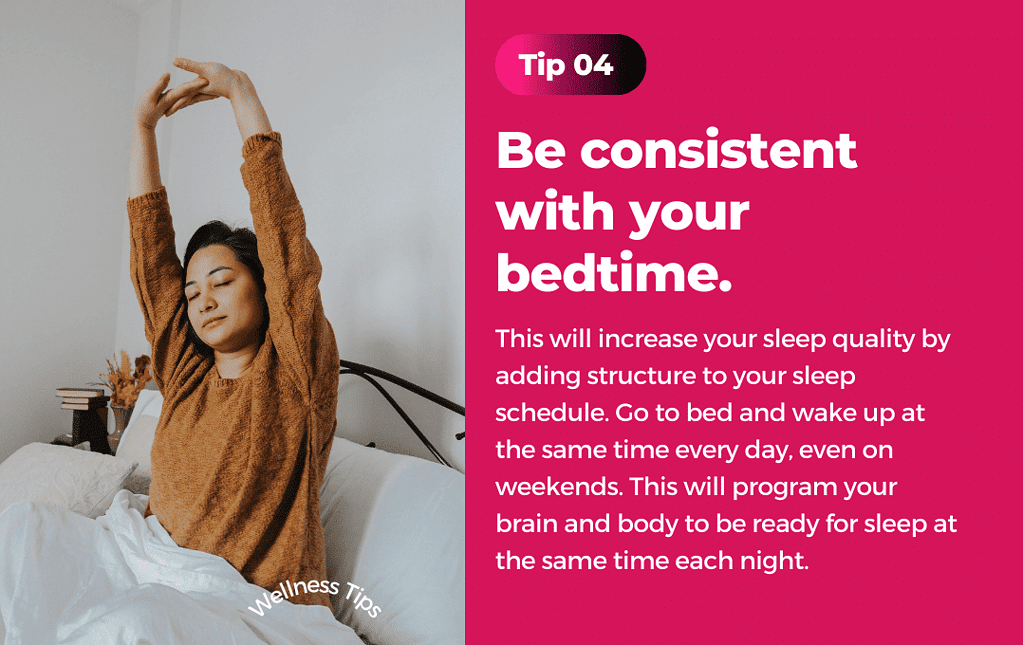
Tip 4. Keep a consistent bedtime and wake time.
Keep a consistent bedtime and wake time. You should go to bed at the same time every day (including weekends). This will help your body fall asleep faster. You should also wake up at the same time each day. This routine will keep your body in sync with its natural sleep-wake cycle. Try going to bed and wake up at the same time every day, even on weekends. This will program your brain and body to be ready for sleep at the same time each night.
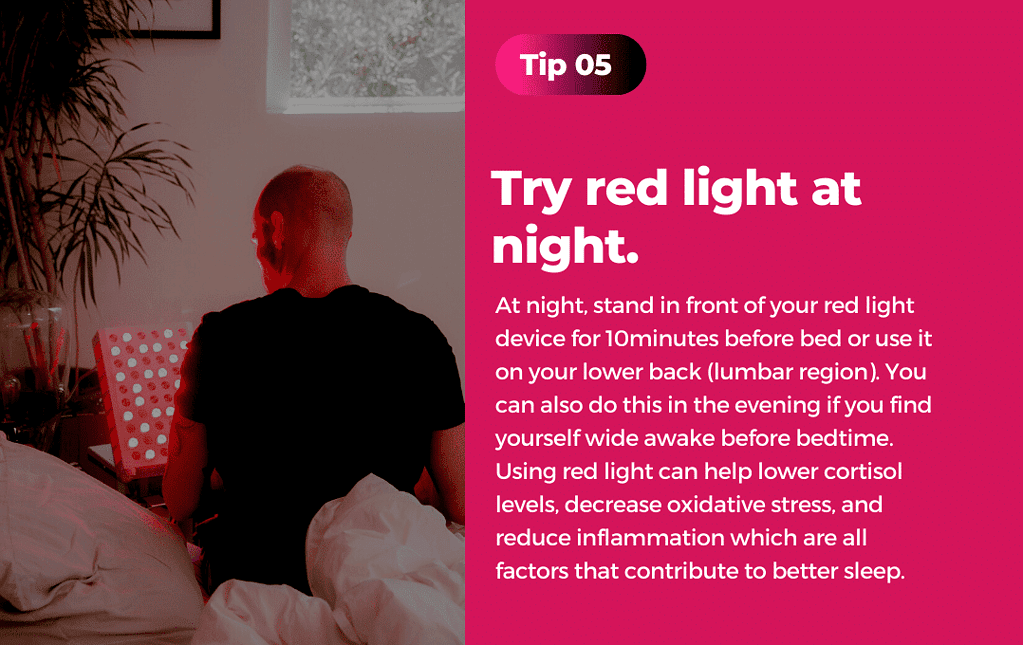
Tip 5. Use red light in the evening.
To have a good sleep, try using your red light device before bed. This is the time when our body starts to transition to rest mode. At night, stand in front of your red light device for 10-minutes before bed or use it on your lower back (lumbar region). You can also do this in the evening if you find yourself wide awake before bedtime. Incorporating red and near-infrared wavelengths into your nighttime routine will help lower cortisol levels, decrease oxidative stress, and reduce inflammation which are all factors that contribute to better sleep.
Bonus: Establishing a nighttime routine.
There’s more to sleep than simply going to bed. Establishing a good routine is key to getting the most out of your sleep. You should create an environment in your room that is conducive to sleep. This means no blue lights, no electronics in the bedroom, etc. If you are struggling with falling asleep or staying asleep, red light therapy can enhance your night by helping you shift into a deeper state of relaxation and resetting your circadian rhythm.
Using Red Light Therapy for Better Sleep.
For people with sleep problems, a red light therapy device is a simple yet effective way to improve your quality of sleep. With the right red light frequency, you can easily calm the nervous system and prime yourself for restful sleep. Red light bulbs emit a deep red color that is said to help you sleep better and enhance your mood.
Red light, as opposed to blue light, is also less stimulating and does not suppress the production of melatonin nearly as much. Red light therapy is a natural way to help your body achieve better sleep. The use of red light can help reset the body’s internal clock and promote restful sleep. The science behind red light therapy is well researched and documented. Red light therapy can be used to improve circadian rhythm disorders, depression, insomnia and general sleeping issues.
Red Light Therapy Sleep Protocol
- Using red light therapy in the evening at least 60 minutes before bed (1-2 hours before seems to be optimal)
- Treatment area: red and near-infrared light. Shine on lower back (lumbar)
- Treatment time: 10-minutes from 12inches away
- Frequency: Daily as needed. Use at least 3 times a week, 5 times per week is ideal
- Potential Benefits: calm nervous system, reduced inflammation, relaxation
- Notes: Positioning the device on the your face/ neck region is suitable for some people rather than focusing on the back.
Ready to give red light therapy a shot for a better night’s sleep? Check out the Vital Pro. Transform your life and unlock the power in red light therapy with a Vital Red Light Therapy device.. A simple treatment each day can unlock a wide range of benefits for the mind, body and spirit—and now, it’s easier than ever to incorporate red light therapy into your daily routine.
Citations:
https://my.clevelandclinic.org/health/articles/11429-common-sleep-disorders
https://pubmed.ncbi.nlm.nih.gov/23182016/
https://www.ncbi.nlm.nih.gov/pmc/articles/PMC6506010/
https://www.ncbi.nlm.nih.gov/pmc/articles/PMC5443998/



